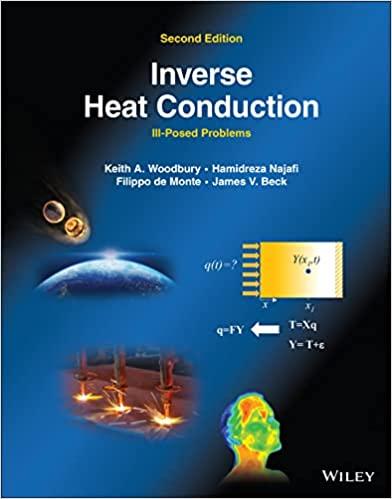Question
Problem 2 (70 points total) Consider a tank with a shape of a cone standing on its base. The height (H) of the tank is
Problem 2 (70 points total) Consider a tank with a shape of a cone standing on its base. The height (H) of the tank is 1 m and the radius of the base (R) is 50 cm. The tank is filled initially with water (density 1 g/cm3) up to 25% of its height (h0, measured from the base of the tank). At time t = 0 you deliver water from the top of the tank with a volumetric flow (vin) of 1 L/s. Concurrently, you start emptying the tank at the bottom with a volumetric flow (vout) of 2 L/s. At some time (tempty), the tank is empty. At t = 5 min from the beginning of the whole process (i.e., starting to fill/drain the tank), you close the bottom valve (i.e., no water removal from the tank) and start filling the tank from the top again with the same volumetric flow as before (i.e., 1 L/s). The process stops when the tank is completely filled (tfull). The figure below depicts schematically the entire process.
a. (15 points) Derive a transient balance equation that describes the dependance of liquid height change (dh) in the tank on the time changer (dt). Use symbols (e.g., R, H) and do not plugin numbers.
b. (15 points) Using the result obtained in part a), derive the expression of the liquid height (h) in the tank as a function of time (t). Use symbols (e.g., R, H) and do not plugin numbers.
c. (10 points) Calculate the time it takes for the liquid initially present in the tank to empty completely (tempty).
d. (10 points) Calculate the time it takes for the liquid to refill the tank (trefill referring to the time duration between start filling (5 min) and tfull)). Note: You can reset the time of start filling as t = 0 to simplify your calculation process.
e. (20 points) Use the equation you derive in part b) and plot the dependence of h on t (i.e., h=h(t)) for the entire process (i.e., from time 0 to time tfull). Submit your solution in an Excel file via Moodle (see instructions above). As you may guess this will comprise three processes: i.e., emptying the tank, having tank empty for some time, and filling the tank until it is completely filled. In your solution, do not forget to add the result when the tank is completely empty. Be smart about how you approach the problem. We are not necessarily asking you to calculate h=h(t); (although you can of course do it). There is an easier way around J. Think about it. The key process we ask you to do is to plot the dependence of h on time.
Step by Step Solution
There are 3 Steps involved in it
Step: 1

Get Instant Access to Expert-Tailored Solutions
See step-by-step solutions with expert insights and AI powered tools for academic success
Step: 2

Step: 3

Ace Your Homework with AI
Get the answers you need in no time with our AI-driven, step-by-step assistance
Get Started


